On August 5th, 2023, “Management of Osteoporotic Fractures” CME Training Programme took place in the Auditorium of FV Hospital. The programme featured presentations from seven speakers who represented FV Hospital and Hanoi Medical University. During the programme, speakers shared both internal and external treatment approaches, methods of support through physical therapy, and clinical nutrition.
Osteoporotic Fractures: Optimal Prevention
Vu Truong Son, MD, MSc, Deputy Medical Director, FV Hospital, expressed gratitude to the speakers and the collaborative support from sponsors for providing an essential training session in his opening speech. Dr Son mentioned that the incidence of osteoporosis is increasing as Vietnam’s population ages, and the risks of this condition can be preventable. “Therefore, I hope that this training programme will help everyone to stay up to date with the latest information, thereby assisting in treatment and enhancing our patients’ quality of life,” adds Dr Son.
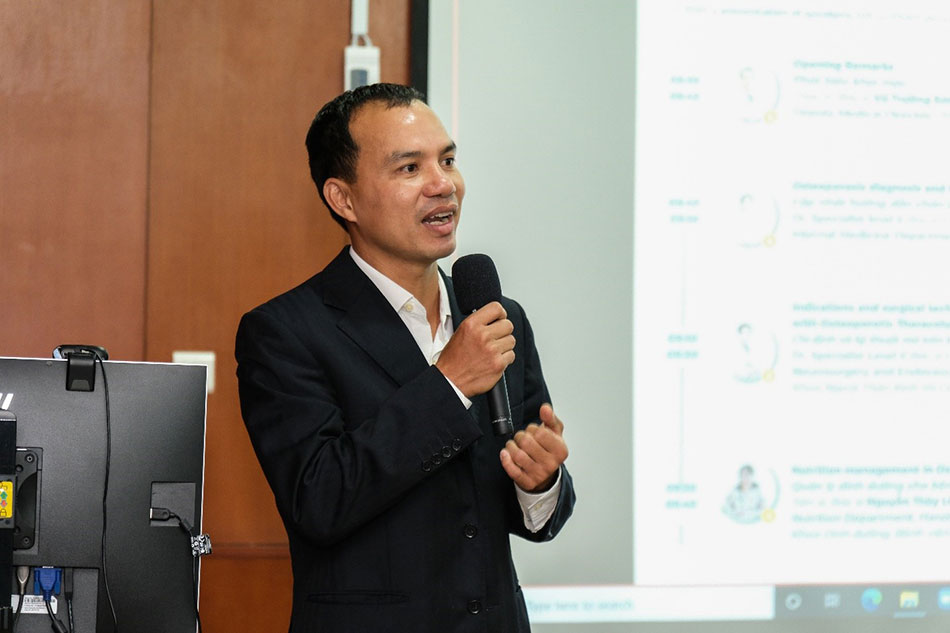
Vu Truong Son, MD, MSc, Deputy Medical Director, FV Hospital, gives an opening speech
Kicking off the programme, Dr Nguyen Thi Kim Huong, Specialist Level I, Rheumatologist, FV Hospital, provided updates on diagnostic and treatment guidelines for osteoporotic conditions. Dr Huong emphasised the importance of early detection for timely intervention in order to break the “cycle” of osteoporosis—namely, the occurrence of fractures. “Fractures have various impacts on patients’ psychological well-being and even their financial circumstances. However, the awareness of osteoporosis among the public remains insufficient, making screening efforts challenging,” notes Dr Huong. Research data from Ho Chi Minh City, cited by Dr Huong, partly illustrates the lack of a strong enough connection between healthcare facilities and the public in awareness programmes concerning osteoporosis.
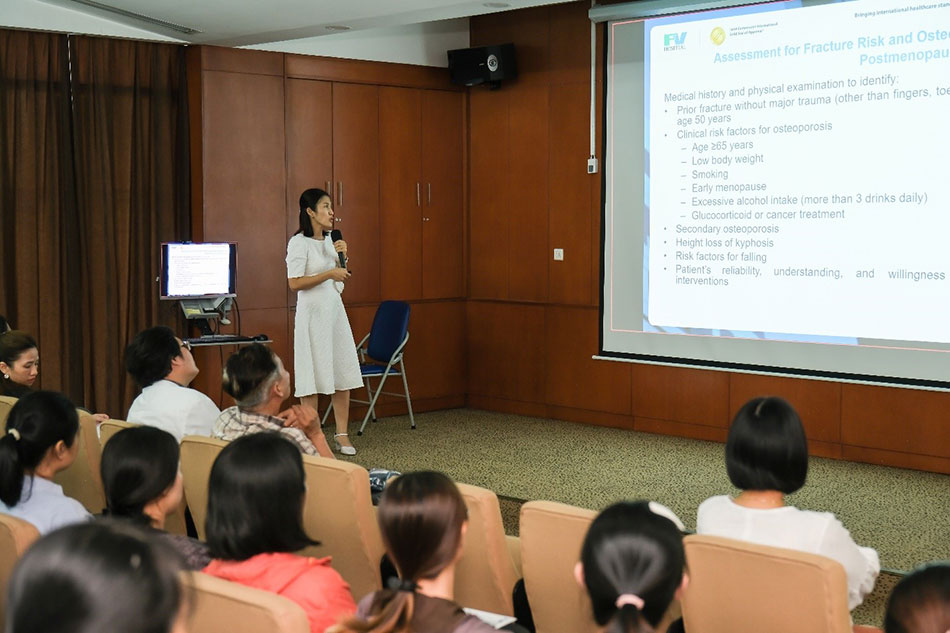
Dr Nguyen Thi Kim Huong, Specialist Level I Rheumatologist, FV Hospital, opens the programme with her presentation
Dr Nguyen Viet Quynh Thu, Specialist Level II, Head of Nutrition & Dietetics Department, FV Hospital, gave a presentation on the crucial role of nutrition in preventing and treating osteoporosis and provided a comprehensive overview of suitable nutritional strategies for osteoporosis patients. Dr Thu highlighted details of the various food types, menu planning methods and exercises which help to supplement Calcium and Vitamin D—two essential minerals for combating osteoporosis. “Nutrition is a vital approach to osteoporosis prevention and helps manage many diseases that negatively affect the musculoskeletal system of patients,” Dr Thu concluded.

Dr Nguyen Viet Quynh Thu, Specialist Level II, Head of Nutrition & Dietetics Department, FV Hospital, speaks at the training programme
Her colleague in the field of nutrition, Nguyen Thuy Linh, MD, PhD, Deputy Head of Nutrition & Dietetics, Hanoi Medical University, presented on the approach to managing nutrition for osteoporosis patients. Dr Linh emphasised, “Building optimal bone health before the age of 30 is crucial, as bone density tends to decline after this period.” Additionally, Dr Linh described factors that increase the risk of osteoporosis, such as diabetes, autoimmune diseases, thyroid disorders, malabsorption syndrome, and excessive alcohol consumption.
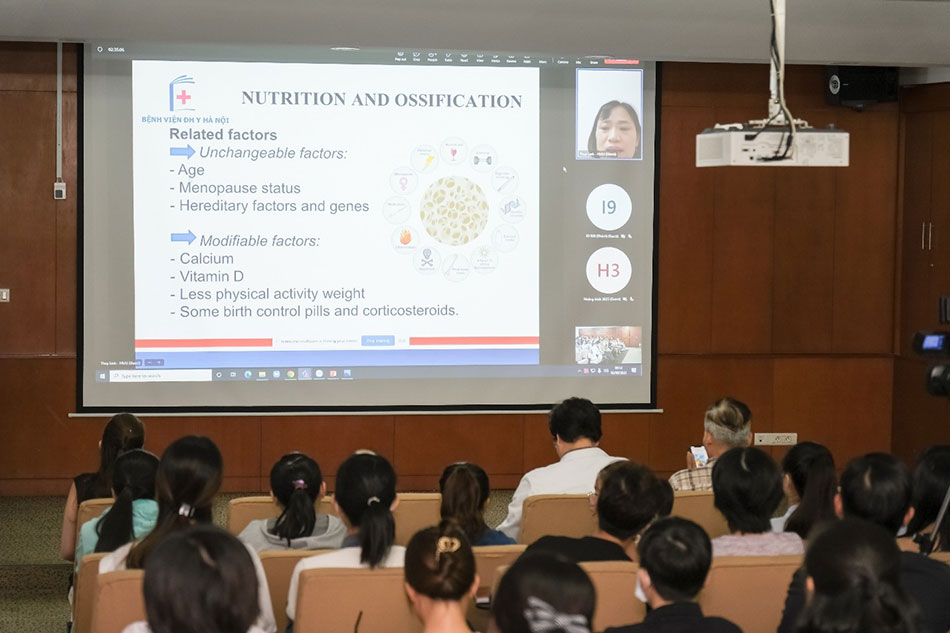
Nguyen Thuy Linh, MD, PhD, Deputy Head of Nutrition & Dietetics Department, Hanoi Medical University, live-streams her presentation
Osteoporosis can lead to various complications, among which vertebral compression fractures (VCFs) are the most common, affecting up to 750,000 individuals annually. Dr Nguyen Nam Binh, Specialist Level I, Pain Specialist, Pain Clinic, FV Hospital, presented on pain management in osteoporotic fractures with a special focus on vertebral compression fractures.
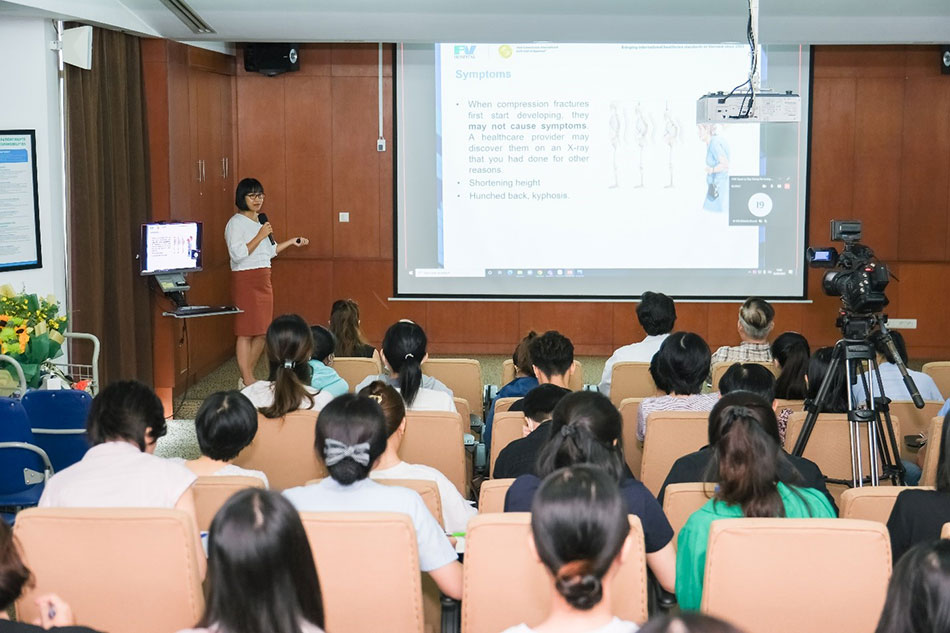
Dr Nguyen Nam Binh, Specialist Level I, Pain Specialist, Pain Clinic, FV Hospital, presents on pain management related to osteoporotic fractures
Dr Binh also provided detailed insights into internal (medication-based) treatment guidelines for pain caused by osteoporosis. “However, similar to the previous articles in today’s programme, the best approach for addressing these situations is early prevention of osteoporosis,” Dr Binh concludes her presentation.
Bone fractures require immediate surgical intervention
Representing the surgical specialities team, Dr Nguyen Manh Hung, Specialist Level I, Head of Neurosurgery and Endovascular Neurosurgery, FV Hospital, shared about the indications, surgical techniques, and current innovative treatment methods for patients with thoracic and lumbar vertebral fractures. In addition to providing crucial information for effective surgical interventions, Dr Hung emphasised that many osteoporotic fractures occur rather silently and suddenly, with some cases not resulting from trauma but changes in posture.

Dr Nguyen Manh Hung, Specialist Level I, Head of Neurosurgery and Endovascular Neurosurgery, FV Hospital, delivers his presentation for the surgical treatment team
“The treatment of these cases follows a multidisciplinary approach, combining internal medicine and surgery,” states Dr Manh Hung. Approximately 60 per cent of osteoporotic fractures occur in the thoracic and lumbar spine region. In recent years, Dr Hung and the team at FV Hospital have treated numerous cases of vertebral compression fractures due to osteoporosis and traumatic vertebral fractures by injecting bio-cement. The effectiveness and advantages of this new technique were also presented in the programme.
During his presentation, Le Trong Phat, MD, PhD, Head of Orthopaedics & Hand Surgery Department (Bone & Joint Centre), FV Hospital, shared treatment methods for cases of hip fractures caused by osteoporosis. The majority of these cases involved pelvic and femoral neck fractures. Dr Phat noted, “Ideally, in these situations, surgery should be performed within 24 to 48 hours to avoid complications or even death. Cases have a 10 to 25 per cent mortality rate if they’re not operated on within 12 months.”
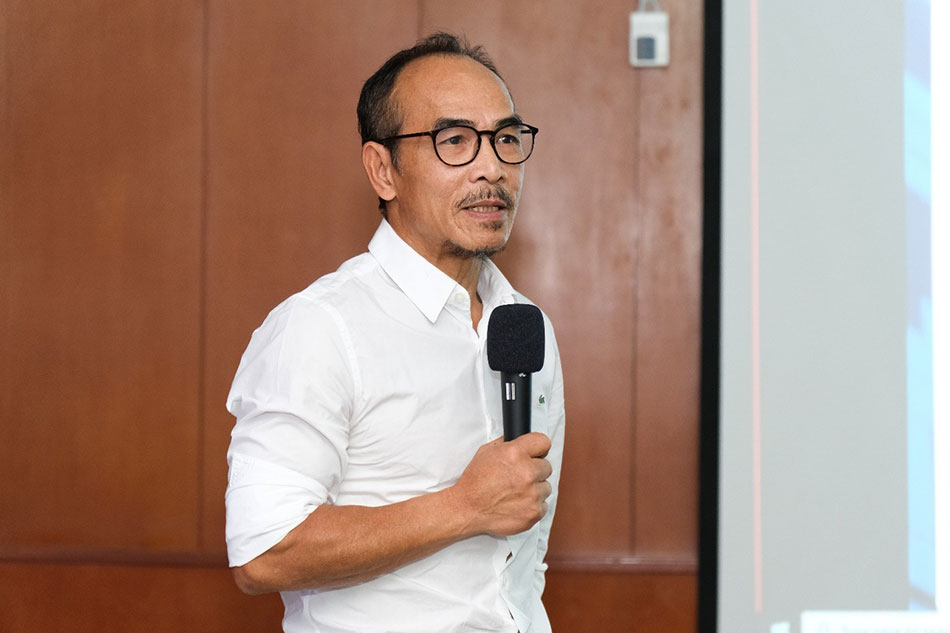
Le Trong Phat, MD, PhD, Head of Orthopaedics & Hand Surgery Department, FV Hospital, presents on treatment methods for cases of hip fractures caused by osteoporosis.
Surgery for treating hip fractures is uncomplicated, however, the demographic that typically experiences hip fractures typically comprises elderly patients. Therefore, Dr Phat also recommended careful multidisciplinary consultations to pre-empt the risks associated with underlying conditions. Importantly, he encouraged colleagues to be more confident in managing such situations for the elderly as their quality of life tends to show clear improvement after surgery.
To complete the discussion on surgical treatment approaches for osteoporotic conditions, Mrs Catherine Cousin, PhD, Head of Physiotherapy & Rehabilitation, FV Hospital, provided an overview of the crucial role of physiotherapy in improving bone health and managing osteoporosis. Mrs Catherine stated, “Depending on age and musculoskeletal status, we will conduct assessments and design effective, safe, bone health improvement programmes.” She also emphasised specific issues related to physical activity in different age groups, ergonomic concerns, and lifestyle habits aimed at optimising musculoskeletal joint health and preventing risks associated with osteoporosis.
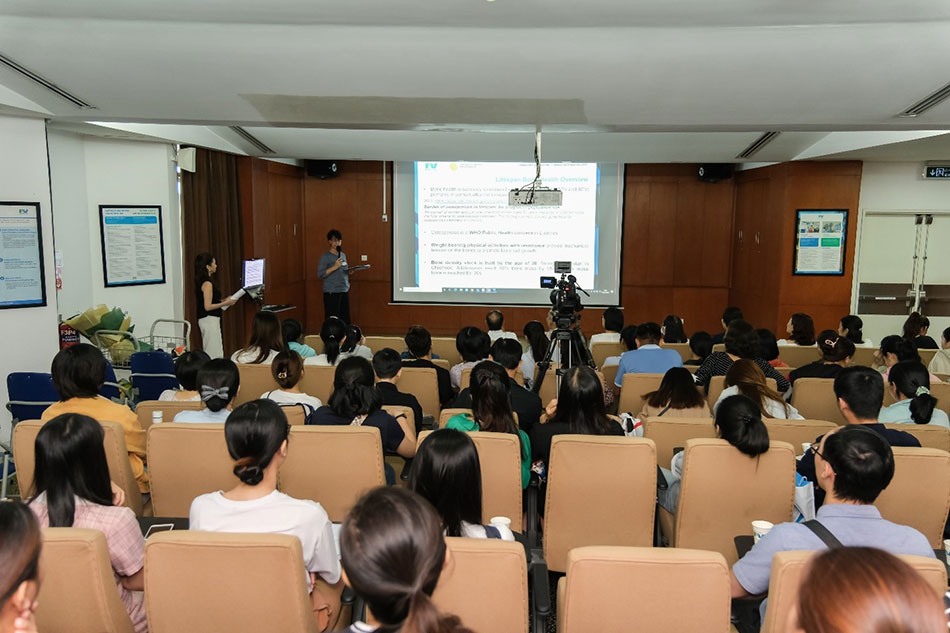
Mrs Catherine Cousin, PhD, Head of Physiotherapy & Rehabilitation, FV Hospital, provides an overview of the crucial role of physiotherapy in improving bone health and managing osteoporosis
Concluding the programme, Dr Louis Brasseur (Head of Pain Clinic, FV Hospital) extended gratitude to all participants. “This has been a very engaging topic, as you all have witnessed. We need to continue to collaborate and help patients recognise that osteoporosis is a preventable concern. I hope you have gained valuable insights from this morning’s session.”
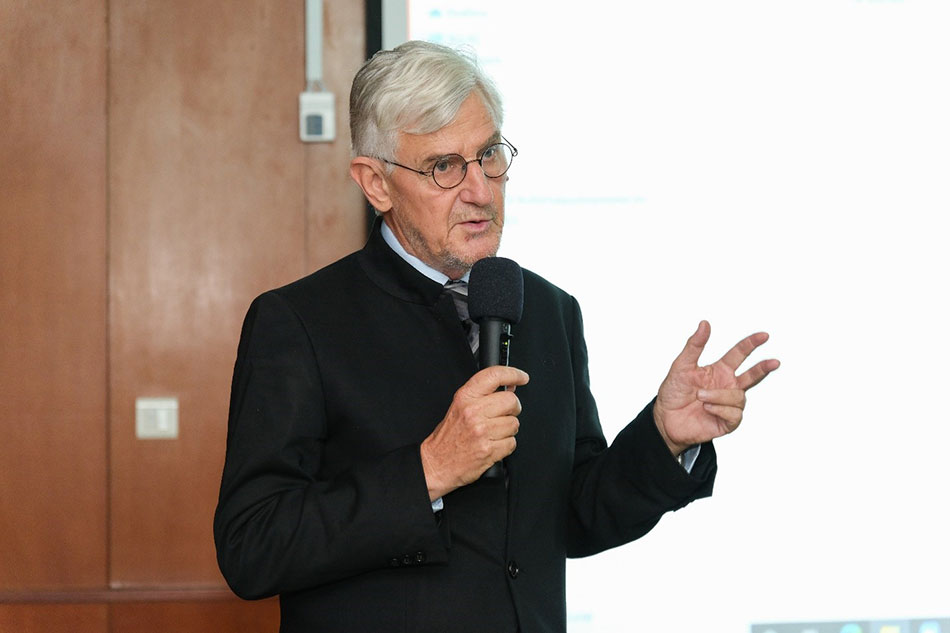
Dr Louis Brasseur, Head of the Pain Clinic, FV Hospital, extends his gratitude to all participants.
The Pain Clinic’s “Management of Osteoporotic Fractures” CME Training Programme at FV Hospital has not only brought new knowledge but also provided an opportunity for healthcare experts to share experiences, update their knowledge, and learn the best methods in managing and treating osteoporosis. The programme has contributed to enhancing the professional capacity of doctors and healthcare staff. More profoundly, it plays a significant role in improving the quality of care and the lives of osteoporosis patients.



